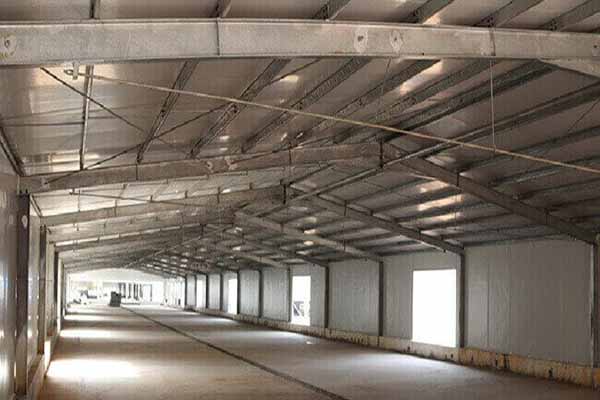10000-Layer Chicken House Construction: A Comprehensive Guide
Time : 2025-07-01
In the modern poultry industry, the construction of high-capacity chicken houses is a crucial factor for achieving efficient production and cost-effectiveness. With the rapid development of the industry, 10,000-layer chicken houses have become the new trend. This article aims to provide a comprehensive guide on the construction of 10,000-layer chicken houses, covering the planning, design, equipment, and management aspects.
I. Planning and Design
The planning and design stage of a 10,000-layer chicken house construction is critical to ensure the success of the project. Here are some key points to consider:
1. Location Selection: Choose a site with a suitable climate, close to water and power sources, and away from residential areas and industrial pollution.
2. Topography and Layout: Analyze the topography to minimize the construction cost and ensure a smooth operation. The layout should be efficient and optimized for the required production capacity.
3. Structure and Materials: Select the appropriate structure and materials that are durable, energy-efficient, and environmentally friendly. Steel frame structures are commonly used for large-scale chicken houses.
II. Equipment Selection
The selection of appropriate equipment is crucial for ensuring the smooth operation of a 10,000-layer chicken house. Here are some essential equipment:
1. Feed System: Automatic feeding systems, such as chain feeders or auger feeders, can supply feed to the chickens at regular intervals.
2. Watering System: Automatic waterers provide a constant supply of fresh water to the chickens, ensuring their hydration.
3. Ventilation System: Efficient ventilation is vital for maintaining a comfortable environment in the chicken house. Fans, evaporative coolers, and air inlets should be installed to regulate the temperature and humidity.
4. Manure Removal System: Manure removal systems, such as conveyor belts or scraper systems, can keep the chicken house clean and prevent disease transmission.
5. Egg Collection System: Automatic egg collection systems help in maintaining egg quality and increasing production efficiency.
III. Environmental Control
Proper environmental control is essential for the health and growth of chickens in a 10,000-layer chicken house. Here are some key aspects:
1. Temperature and Humidity: Maintain a constant temperature and humidity level within the house to ensure the comfort of the chickens. The ideal temperature range for layer chickens is between 18-22°C (64-72°F), and the humidity should be around 50-70%.
2. CO2 Levels: Monitor and control the CO2 levels to prevent respiratory issues in the chickens.
3. Ammonia and H2S Levels: Maintain low ammonia and hydrogen sulfide levels to minimize respiratory and health problems in the chickens.
IV. Management
Effective management is essential for achieving high production and economic returns in a 10,000-layer chicken house. Here are some key management aspects:
1. Staff Training: Provide training for the staff to ensure they are knowledgeable about chicken house management, biosecurity, and biosecurity.
2. Biosecurity: Implement strict biosecurity measures to prevent disease outbreaks and maintain flock health.
3. Monitoring and Record Keeping: Regularly monitor the health, performance, and environmental conditions in the chicken house, and keep detailed records for future reference.
V. Energy Efficiency
Energy efficiency is a significant factor in the operation of a 10,000-layer chicken house. Here are some strategies to improve energy efficiency:
1. Insulation: Proper insulation can reduce energy loss in the chicken house.
2. Solar Power: Utilize solar energy for lighting, ventilation, and water heating systems to reduce electricity consumption.
3. Smart Control Systems: Implement smart control systems that optimize the use of energy, such as automated temperature and humidity control.
Conclusion
The construction of a 10,000-layer chicken house is a complex and challenging process that requires careful planning, design, equipment selection, environmental control, and management. By following the guidelines provided in this article, poultry producers can ensure the successful operation of their high-capacity chicken houses and achieve maximum production and economic returns.












